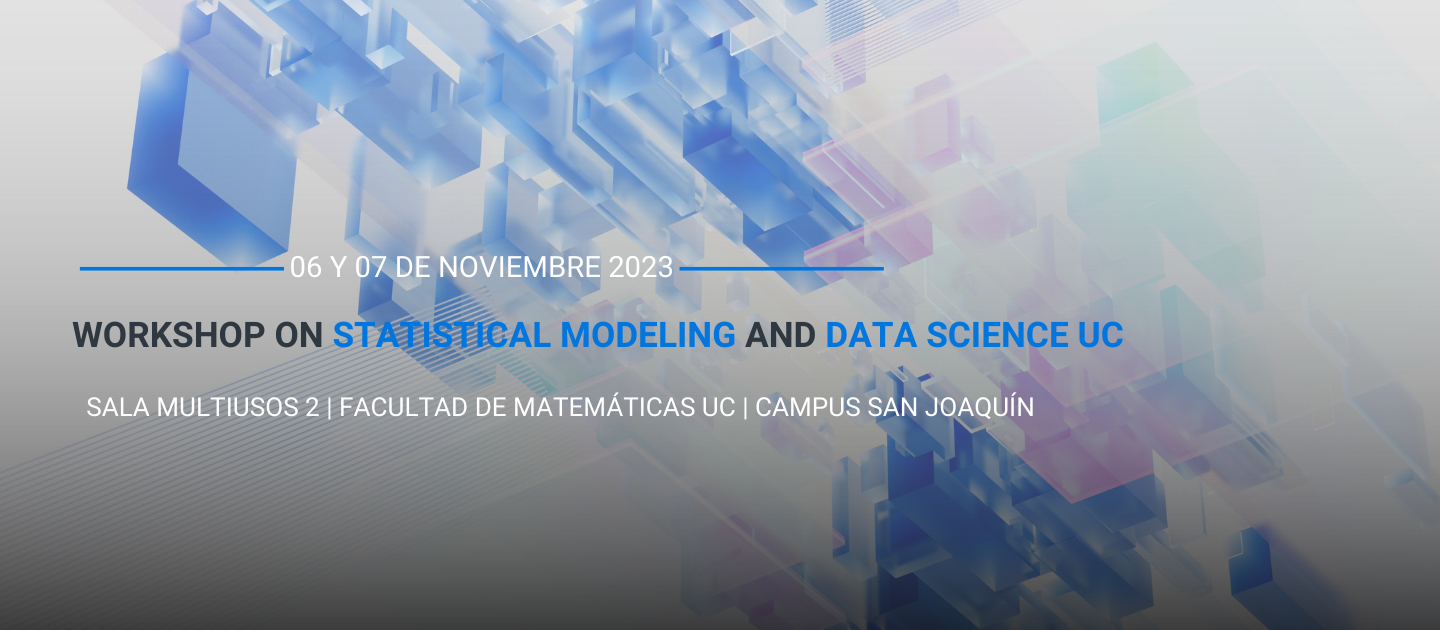


The Workshop on Statistical Modeling and Data Science UC is a small academic gathering organized by the Department of Statistics UC to impart knowledge, hone skills, and provide hands-on experience in statistical modeling and data science to attendees.
The meeting at UC presents a rare opportunity to engage with a highly-ranked institution's research, prestige, and academic excellence, as recognized by the QS World University Rankings 2024.
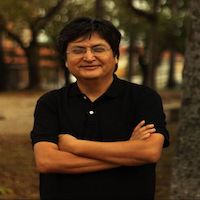
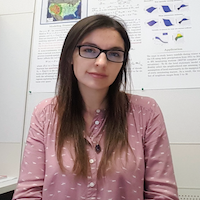
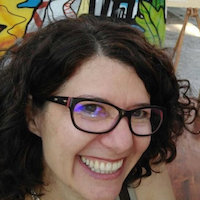
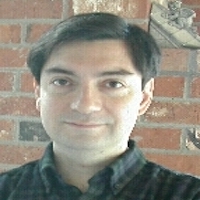
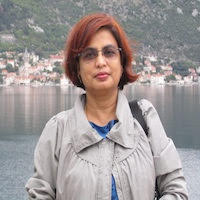
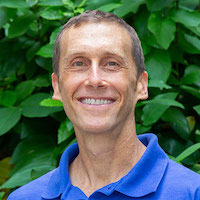
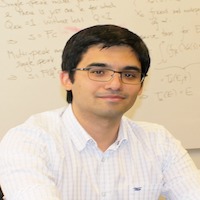
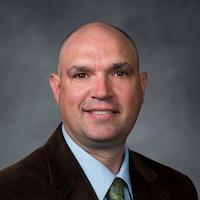
| Hora | Monday 06 Nov |
|---|---|
| 13:45 | Registration/Opening |
| 14:00 | Rosangela Loschi |
| 15:00 | Anuradha Roy |
| 16:00 | Coffee Break |
| 16:30 | Jorge Bazán |
| 17:30 | Carlos Sing-Long |
| 18:30 | Welcome Reception |
| Hora | Tuesday 07 Nov |
|---|---|
| 9:00 | Richard Warr |
| 10:00 | Daniela Castro |
| 11:00 | Coffee Break |
| 11:30 | Armin Schwartzman |
| 12:30 | Lunch |
| 14:30 | Alejandro Murua |
| 15:30 | Closing Ceremony |
Campus San Joaquin

Incoming passengers who hold an Australian or Mexican passport should pay a Reciprocity Tax before going through the International Police security checkpoint, and then continue to Immigration Control.
To find out more about this tax, contact the airport at +56 2 2960 1063.
International PolicePassengers must submit their travel documents, i.e. passport or identity card, and the duly stamped visa as necessary, at International Police every time they fly into the country.
International tourists are required to fill out a Tourist Card and hand in a copy of this document when leaving the country. Foreign residents in Chile must hand in a copy of this document upon their return.
Please note that Chilean nationals are not required to fill out a Tourist Card when traveling.
For more information visit INFORMATION FOR PASSENGERS.
Santiago International Airport is located approximately 20 kilometres West of the city. There are 3 official transport options:
The airport has introduced Vía Controlada system. A ground transportation desk is located inside the luggage claim area, where you can request a taxi without pre-booking. There are regular taxis (painted black & yellow) which run on a meter, or tourist taxis (painted blue) which charge a fixed rate according to the area of the city you are traveling to.
These are minibuses that offer a shared taxi service. They drive you from the airport and drop you off at your hotel. This should be arranged within the airport. Two companies offer this service: Transvip y Delfos.
These are shuttle buses that go from the airport to the city. Two companies offer this service: Turbus and Centropuerto. You can catch these buses immediately upon exiting the main airport terminal. During the day they run frequently. You pay the driver directly. Once you arrive in Santiago, you can get off the bus at a subway (Metro) station and take the subway to your final destination.
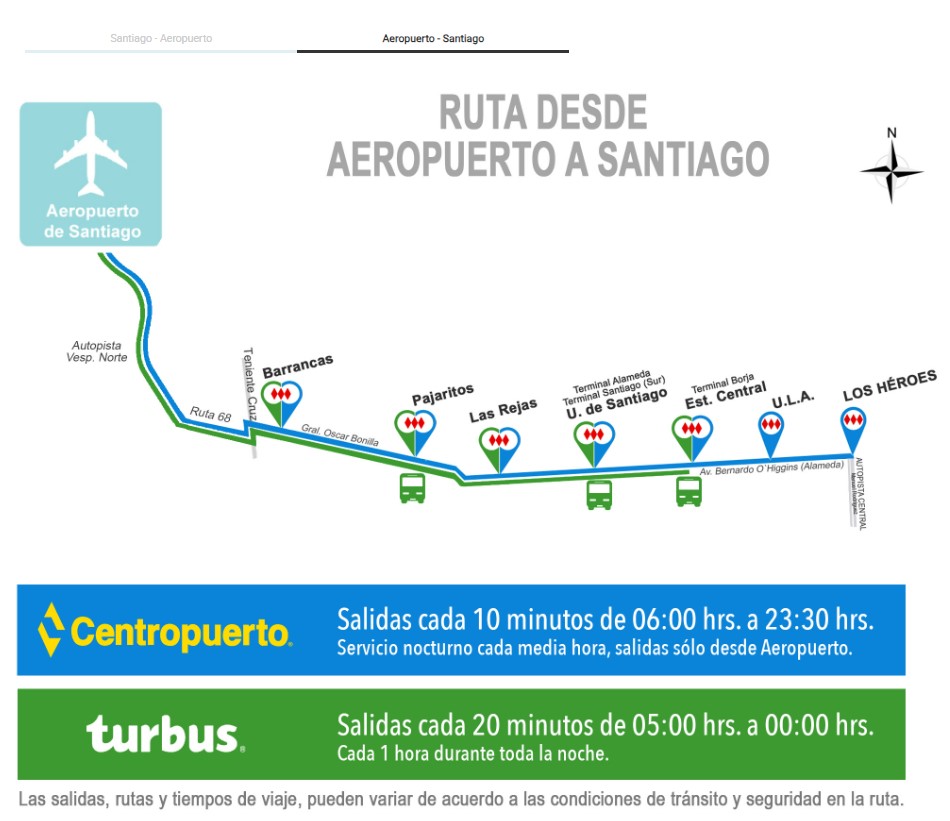
To use public transport, It is recommended to buy a prepaid card Bip. This card is used in subway and buses.
Santiago's subway has five lines. The main line (1) runs modern trains along the central East-West axis Alameda - Providencia - Apoquindo serving the center as well as the newer business districts of Providencia and Las Condes. At Los Héroes, Baquedano and Tobalaba stops, you can change to one of the three lines connecting the southern parts of the city to the center. The fiths line is in the South. You can check the map on the website subway . Tickets cost between 610 and 720 pesos (about USD 0.95 - 1.10), depending on time of day, and include transfers. There is no timetable. But usually the metro runs every 2-3 minutes.
The urban buses are called “micros” and the city buses system is called “Transantiago”. There are mainline buses that are white and green that circulate across the big thoroughfares like Alameda, Av. Providencia, etc. and feeder buses (with different colors) that connect with the city's outskirts. The most important stops of the route are listed in the windowshield. In transantiago.cl or the app Transantiagomaster, iTransantiago or Micros, you can look for the bus lines that you need for a specific route. Tickets cost between 640 and 720 pesos (about USD 0.95 - 1.15) and allow the transfer to other buses or the subway. The only way to pay is with the prepaid card Bip. It can be recharged in the metro station or specific selling points
The regular taxis are black cars with their yellow roofs can be hailed anywhere. In Santiago, there is a base price of 300 pesos (USD 0.50) plus around 130 pesos for each 200 m driven (or per minute when waiting). The rates are posted on the windscreen; the meter has to be where you can see it. You can request a radiotaxi by phone. It is more safe and comfortable. Or you can use a mobile application as Safer Taxi or Easy Taxi. Also, you can use Uber and Cabify applications - the legality or illegality of these applications is not regulated even-.
The Facultad de Matematicas is located on San Joaquin Campus, one of the four campuses of the Pontificia Universidad Catolica. The address of the campus is Av. Vicuña Mackenna 4860, San Joaquin, Santiago. The campus is just in front of the Metro station San Joaquin on Line 5. During the morning from 6 to 9 am and the evening from 6 to 9 pm, Line 5 of the Metro operates 2 services and the trains don’t stop at each station. Only the red train stops at San Joaquin station - look out for the red lights on the train carriage before you get on the train.
It is safer to cross the footbridge to get to the campus rather than crossing the road. You will find a global map of San Joaquin Campus here. On this map the way to the Facultad de Matematicas from the Metro is printed in red.

The weather in Santiago during the summer months (December to March) is usually dry and warm in the day and cool at night. During the winter (June to August) the temperature ranges from 2°C to 16°C.

Chile has a high level of UV radiation so we recommend that you use sunscreen, especially in the summer.
There are ATM machines (Redbanc) all over the city, including the airport. You can exchange money at the airport, in banks or at Casas de Cambio (Currency exchange offices). Note that Casas de Cambio generally have better rates than banks. Banks are usually open from 9:00 to 14:00. The Casas de Cambio are usually open from 9:30 to 18:00.
For currency conversions, please visit XE Currency Converter.There are cash machines and two banks (Corpbanca and Santander) on San Joaquin Campus. Note that if you want to cash a cheque you will be asked to sXE how your passport. In order to cash a Chilean cheque you need to sign vertically across the front side of the cheque and write your passport number on the reverse side.